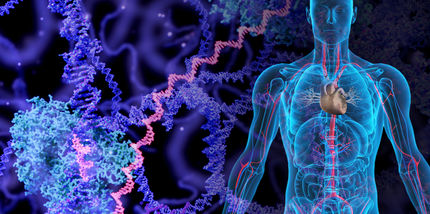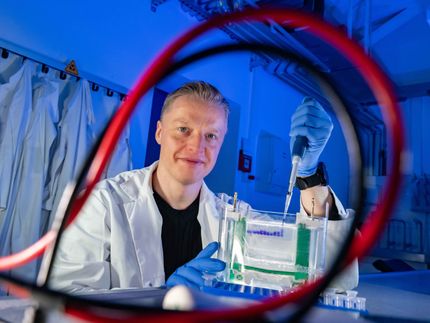Cancer drug shows promise in reducing toxic genetic material in myotonic dystrophy
A group of researchers has shown for the first time in cells and in a mouse model that a drug used to treat cancer can neutralize the toxic RNA that causes the prolonged muscle contractions and other symptoms of myotonic dystrophy type 1, the most common form of adult-onset muscular dystrophy.
"This finding opens a new avenue for a therapeutic strategy for this disease," said Andrew Berglund, Ph.D., a professor of biochemistry and molecular biology in the University of Florida College of Medicine. "This is the first evidence that specifically inhibiting transcription can be effective in knocking down the toxic material that causes the disease."
In myotonic dystrophy and other related neurological disorders, the symptoms stem from repeated individual nucleotides, or "building blocks," in the RNA in muscle tissue cells that can build up over time. These repeats, called CTG expansions in myotonic dystrophy type 1, become 'toxic' when transcribed from DNA. The expansions disrupt the RNA binding proteins responsible for splicing, the 'editing' needed so that the RNA can create appropriate proteins that allow muscles to function properly.
"It's clear that the mis-splicing has a significant role in causing the disease," Berglund said.
He and colleagues from the University of Oregon, Reed College and Osaka University in Japan decided to look at actinomycin D, an antibiotic currently used to treat certain types of cancers by preventing cancer cells from transcribing, or copying, essential cancer information to new cells.
Because the anticancer compound works by binding to troublesome expansions in DNA, the researchers decided to test whether it would work in cells and a mouse model of myotonic dystrophy type 1.
They found that very small concentrations of actinomycin D resulted in almost complete correction of the mis-splicing. They also tested to see if the drug was inhibiting production of normal RNAs in the cells, and found that it altered less than 5 percent of normal RNA sequences
"There was a significant level of specificity for the toxic RNA," said Berglund, a member of the UF Center for NeuroGenetics. "Actinomycin D can reduce the toxic RNA, and also inhibit it from forming."
While this drug shows promise, Berglund said that it might not end up being the compound used in eventual clinical trials. However, the research findings do indicate that this is an approach that needs to be looked at, he said.
The next steps in the research include screening for other compounds with similar activities to actinomycin D that might be equally or more effective, exploring the possibility of modifying actinomycin D to increase its effectiveness and using the antibiotic with other inherited muscular dystrophies to see if it shows promise for those diseases.
Original publication
Ruth B. Siboni, Masayuki Nakamori, Stacey D. Wagner, Adam J. Struck, Leslie A. Coonrod, Shanee A. Harriott, Daniel M. Cass, Matthew K. Tanner, J. Andrew Berglund; "Actinomycin D Specifically Reduces Expanded CUG Repeat RNA in Myotonic Dystrophy Models"; Cell reports; 2015
Most read news
Original publication
Ruth B. Siboni, Masayuki Nakamori, Stacey D. Wagner, Adam J. Struck, Leslie A. Coonrod, Shanee A. Harriott, Daniel M. Cass, Matthew K. Tanner, J. Andrew Berglund; "Actinomycin D Specifically Reduces Expanded CUG Repeat RNA in Myotonic Dystrophy Models"; Cell reports; 2015
Organizations
Other news from the department science

Get the life science industry in your inbox
By submitting this form you agree that LUMITOS AG will send you the newsletter(s) selected above by email. Your data will not be passed on to third parties. Your data will be stored and processed in accordance with our data protection regulations. LUMITOS may contact you by email for the purpose of advertising or market and opinion surveys. You can revoke your consent at any time without giving reasons to LUMITOS AG, Ernst-Augustin-Str. 2, 12489 Berlin, Germany or by e-mail at revoke@lumitos.com with effect for the future. In addition, each email contains a link to unsubscribe from the corresponding newsletter.


















































